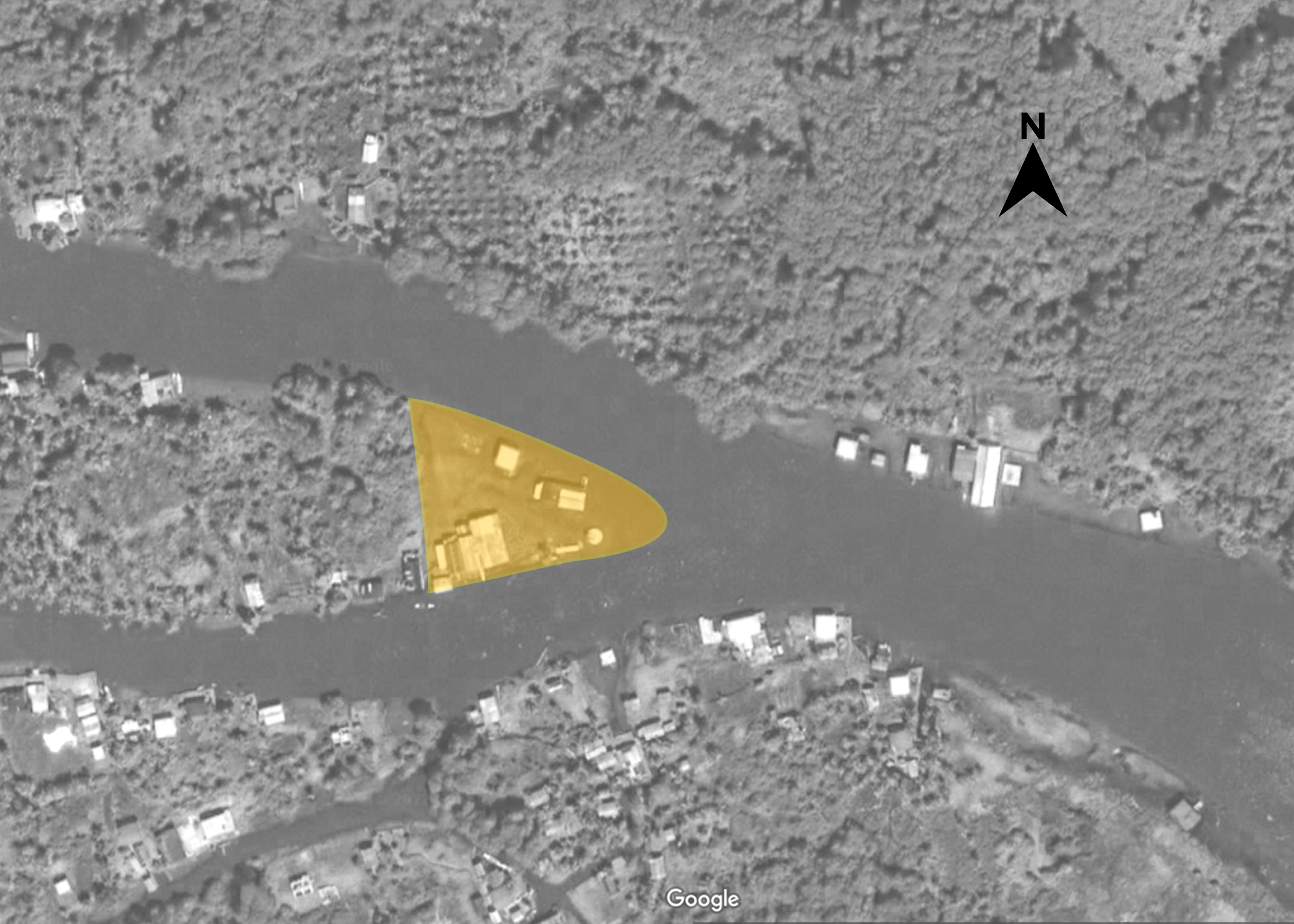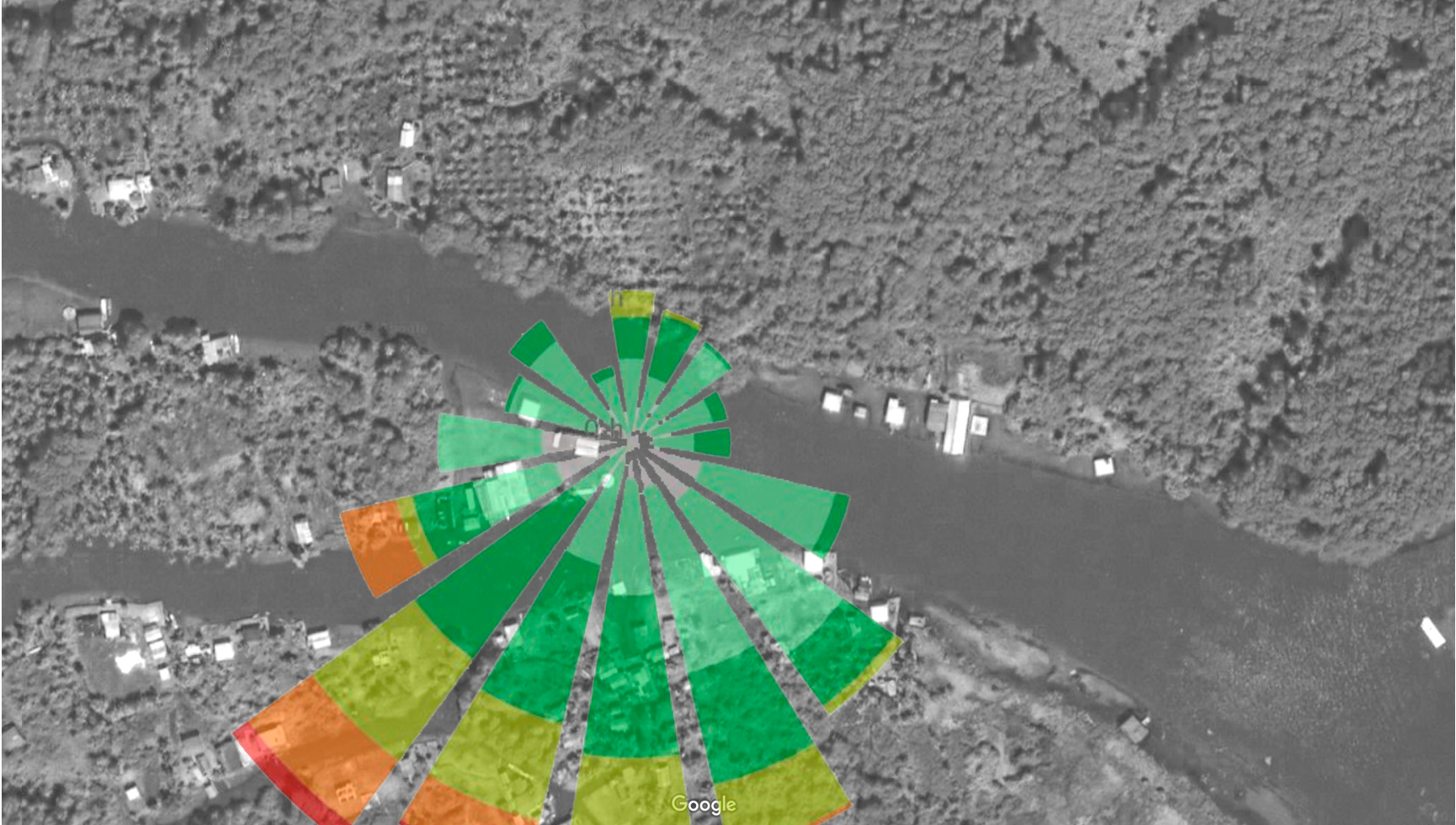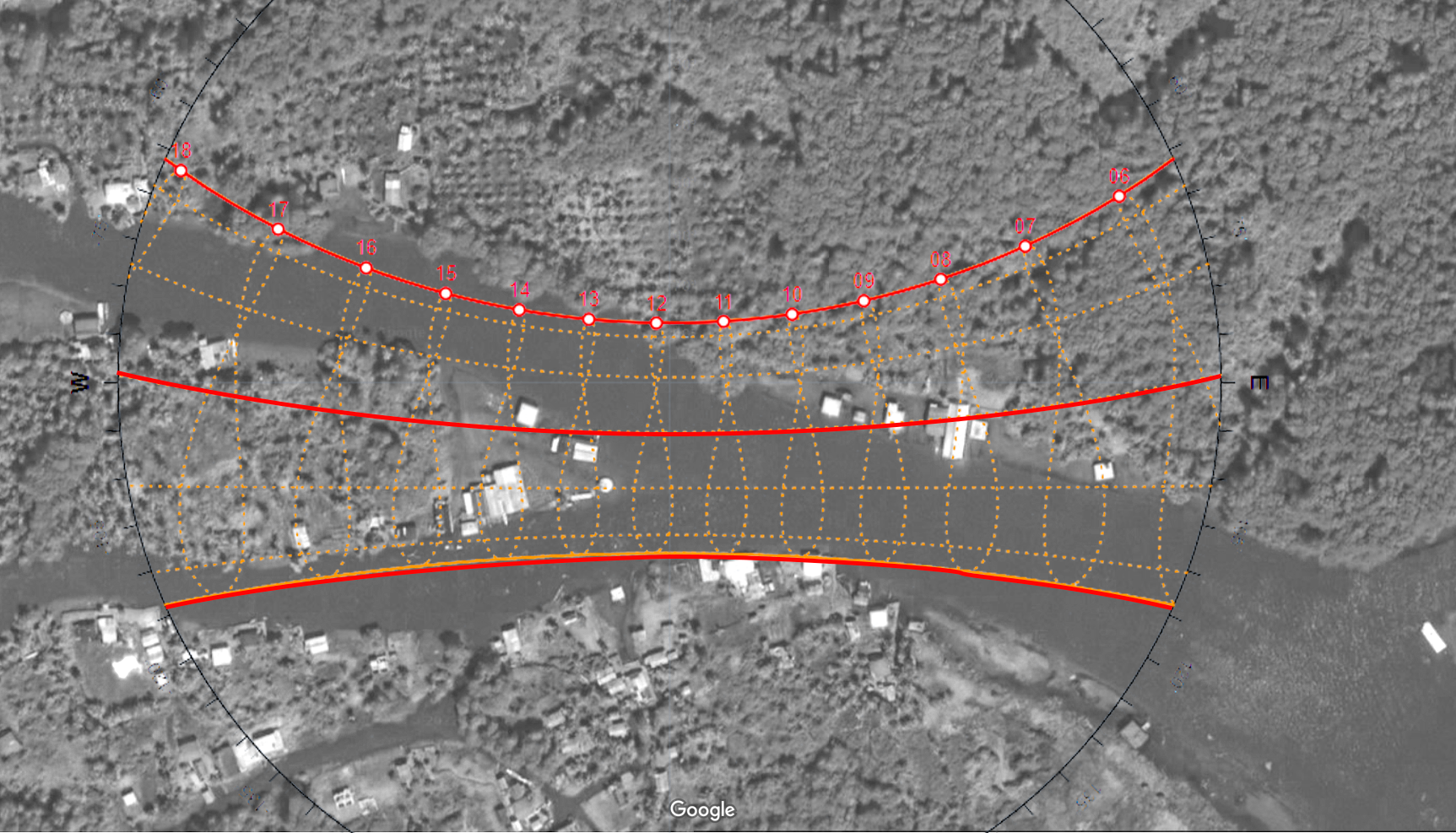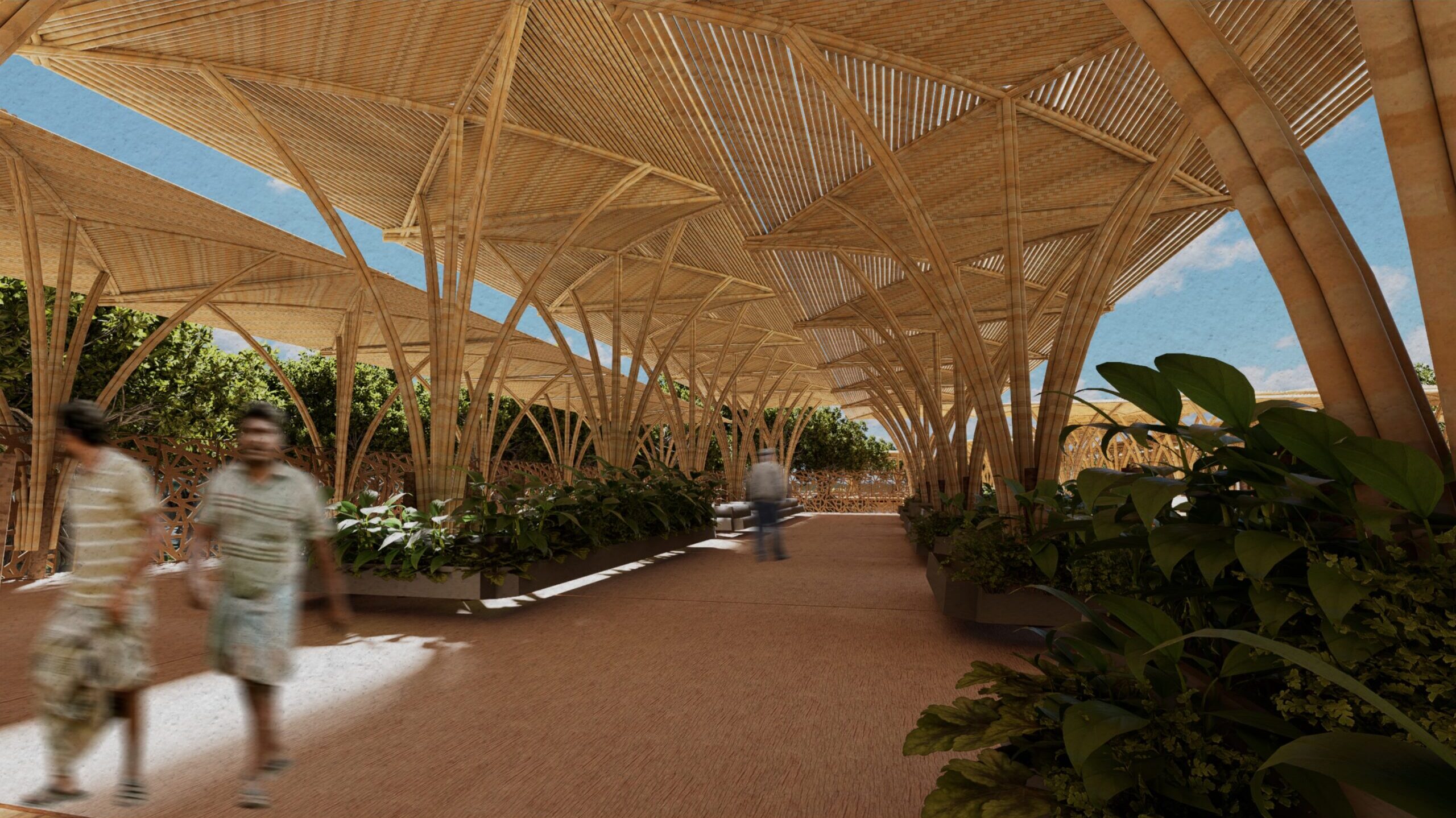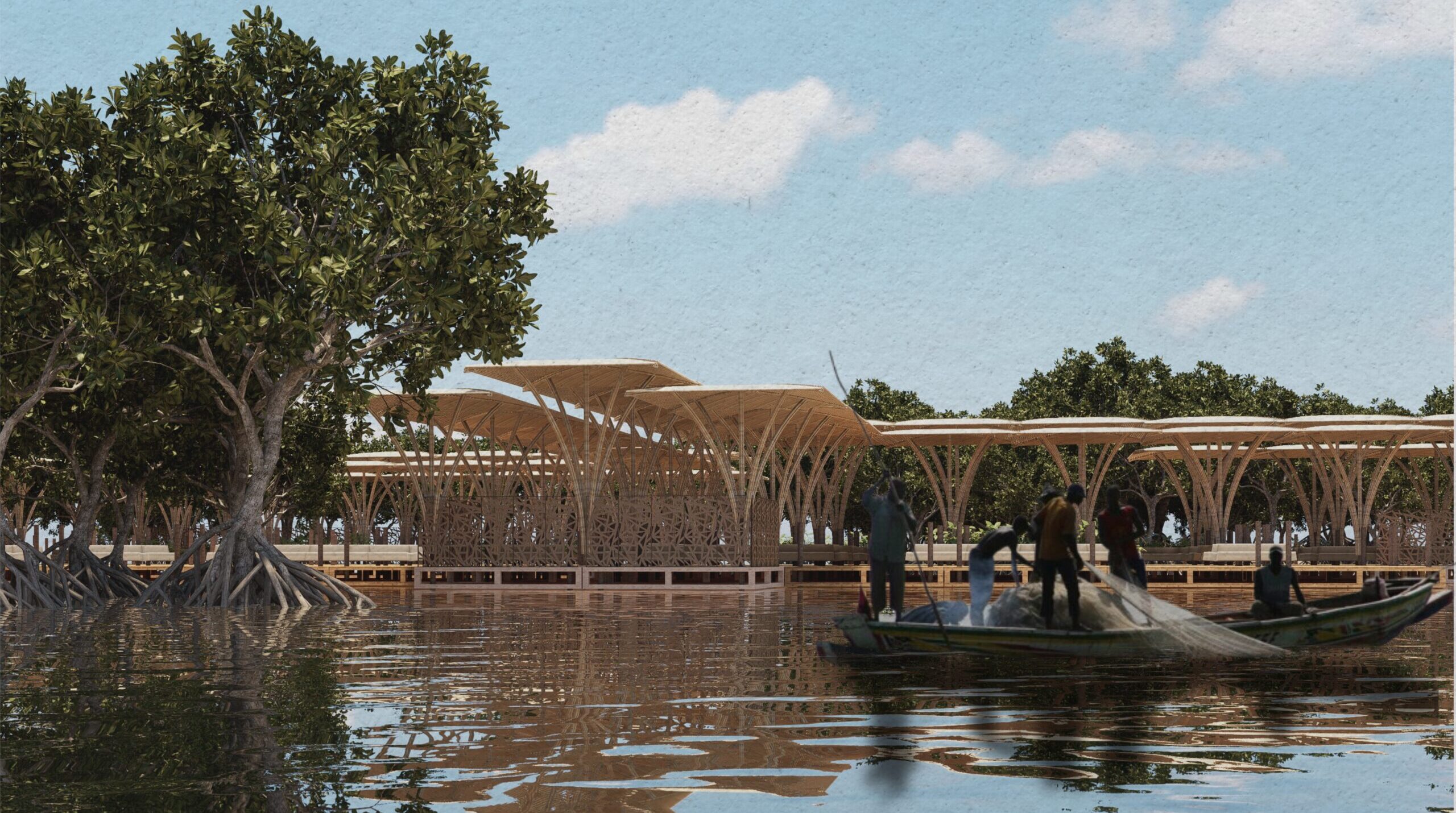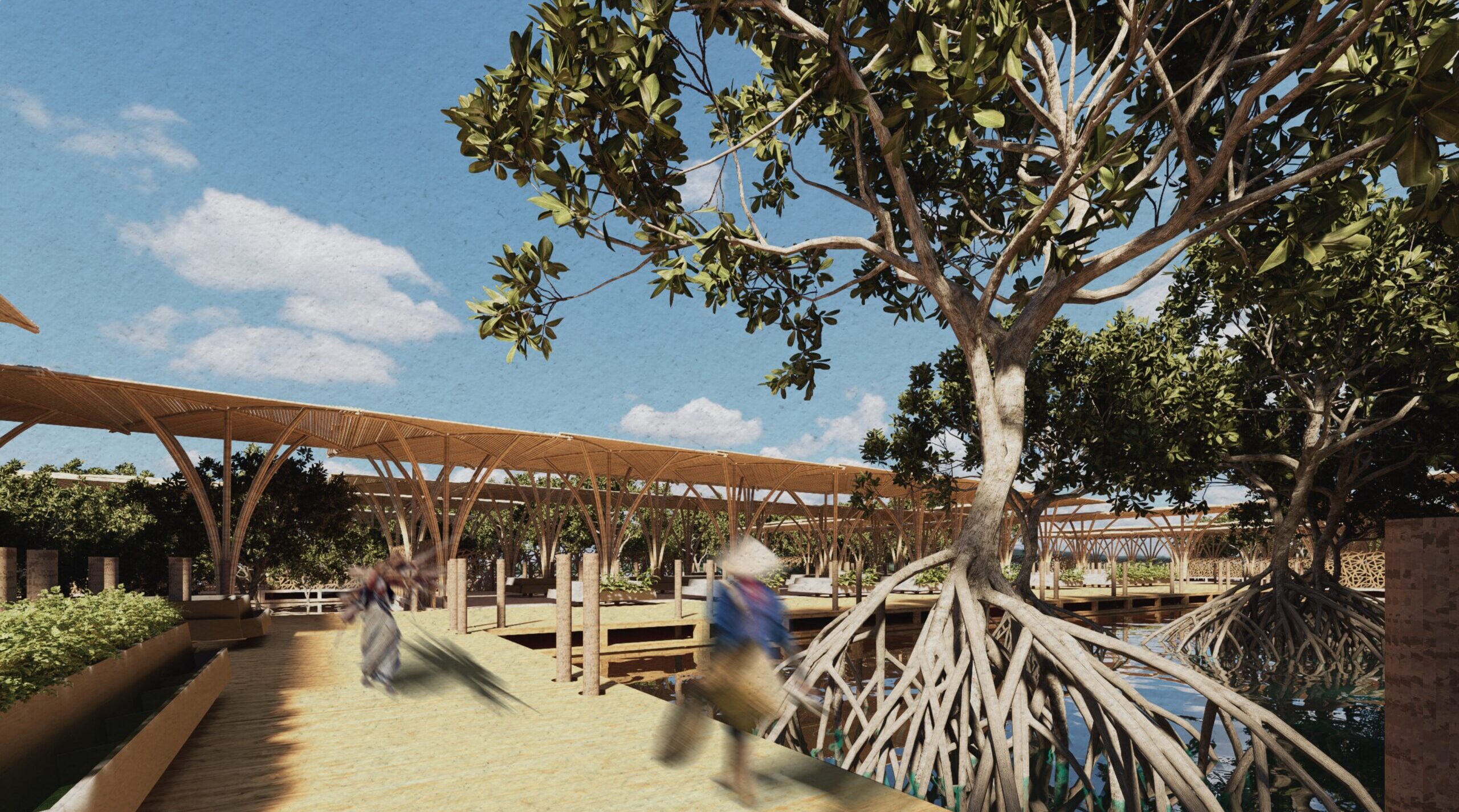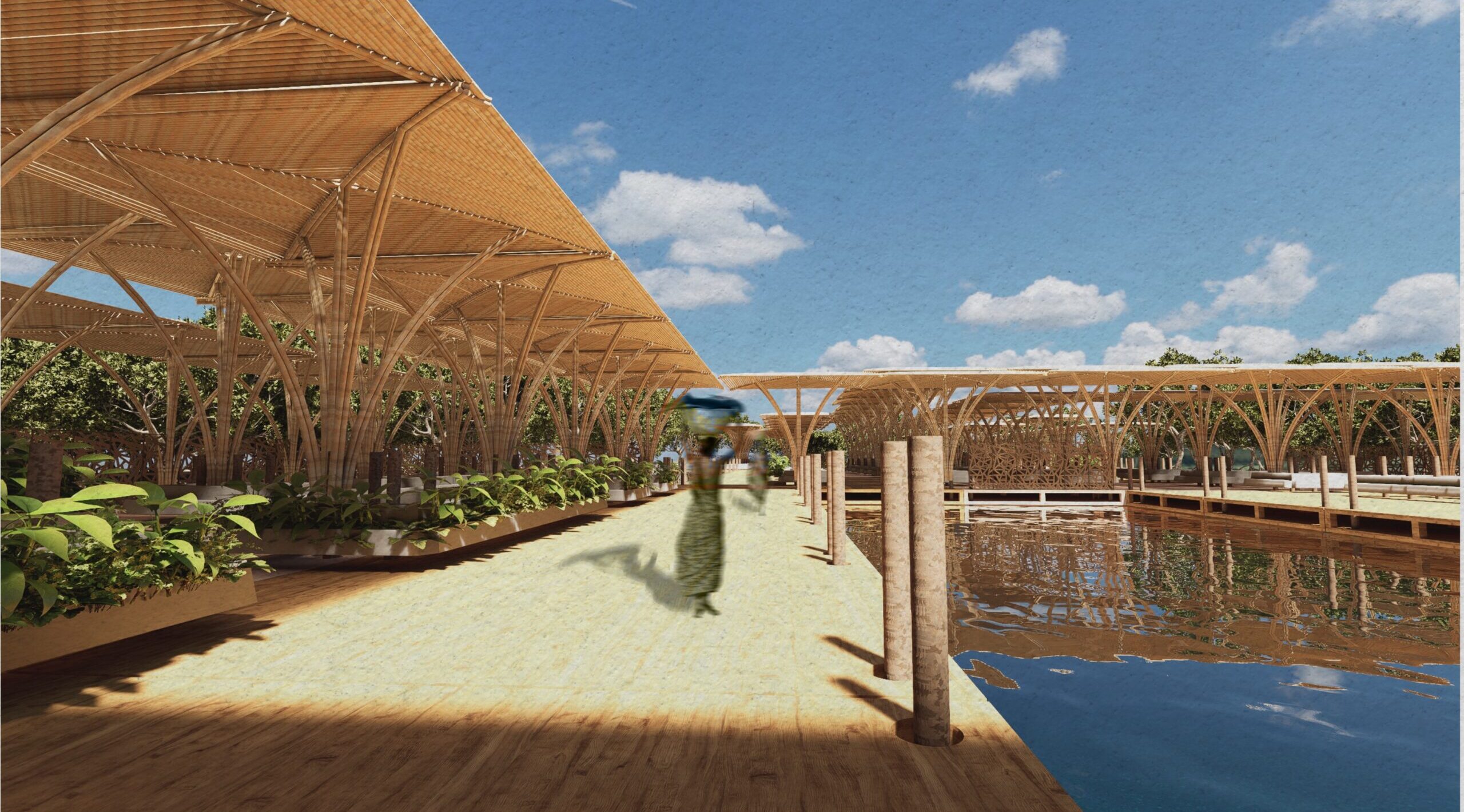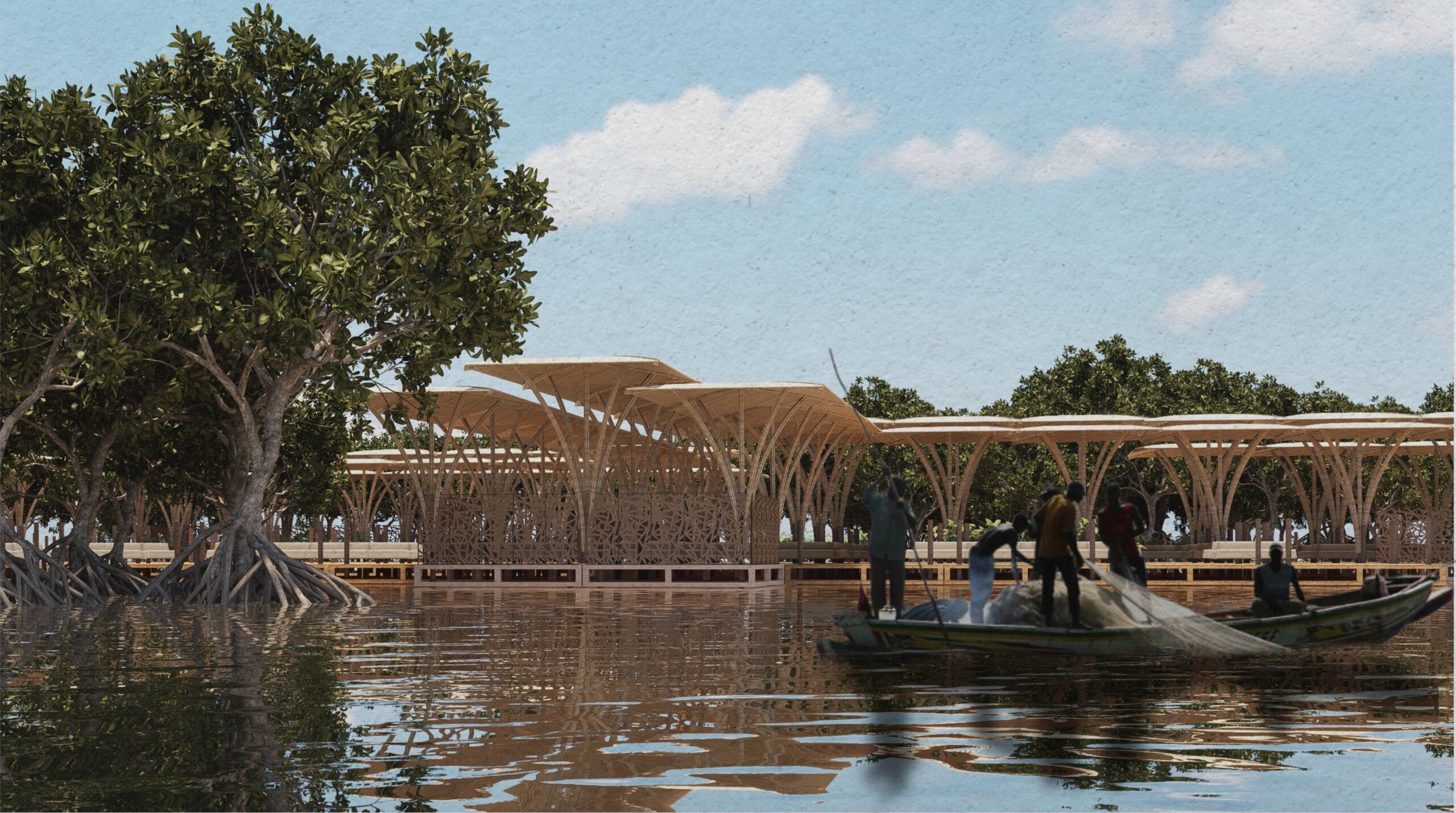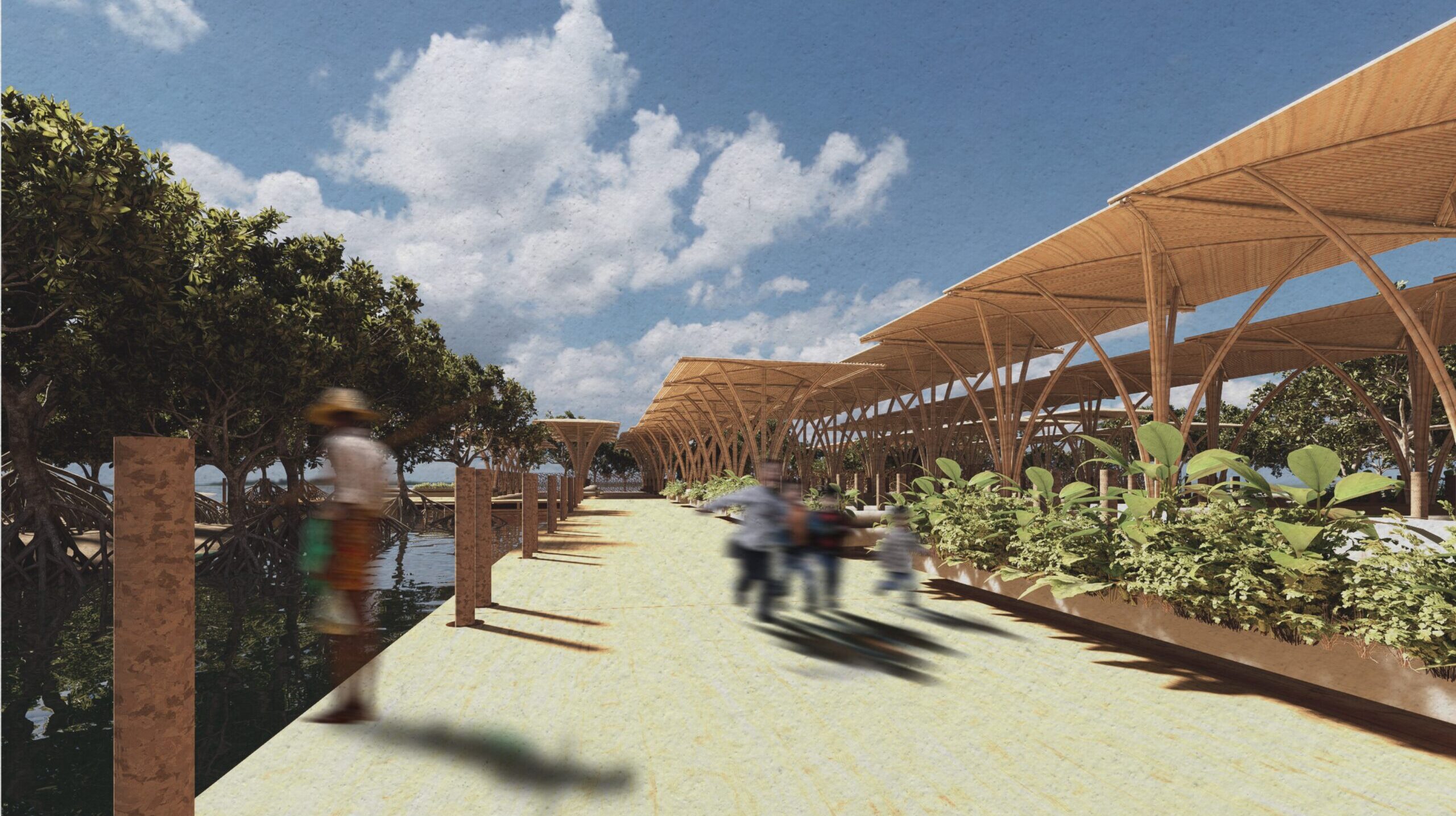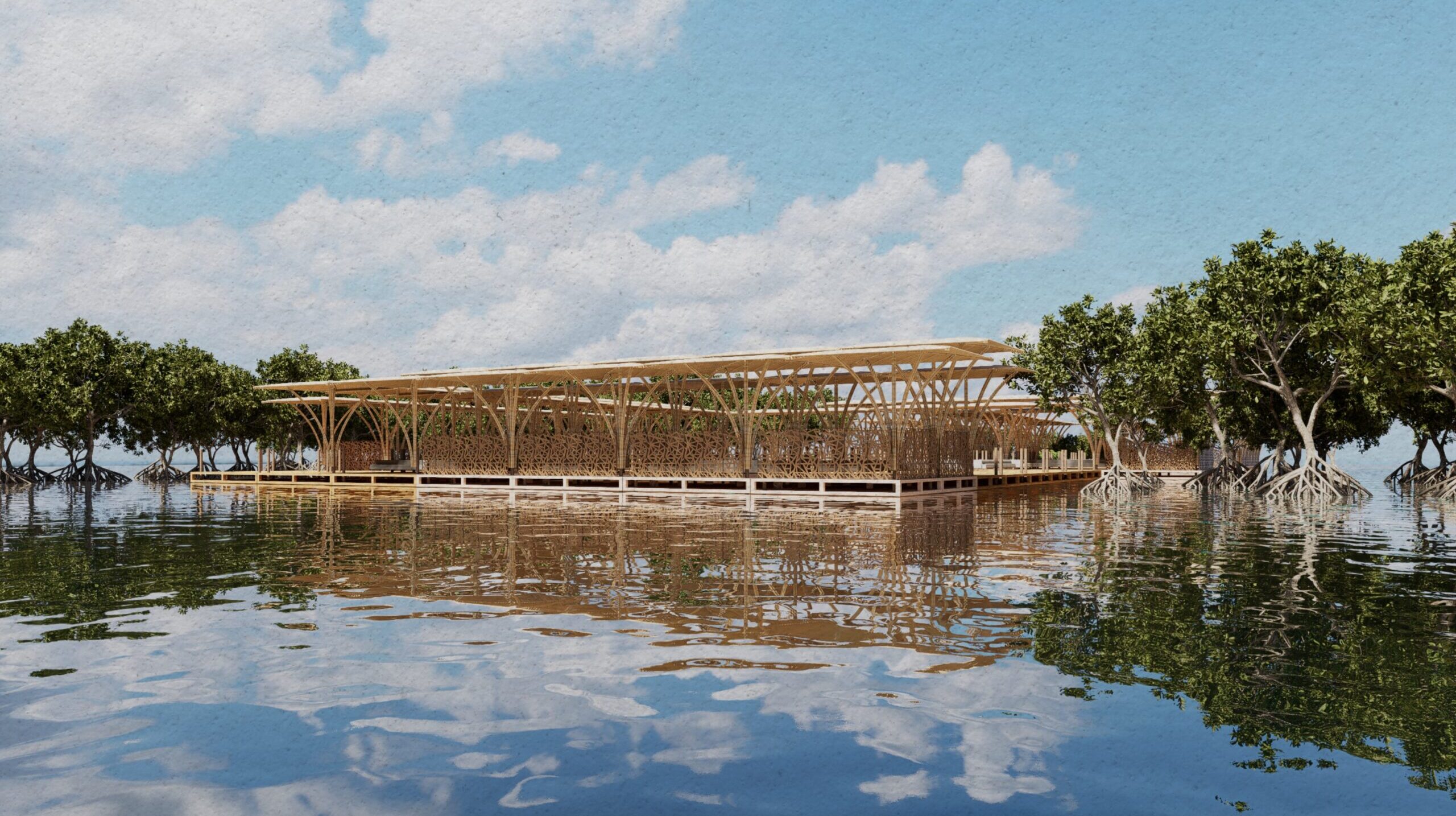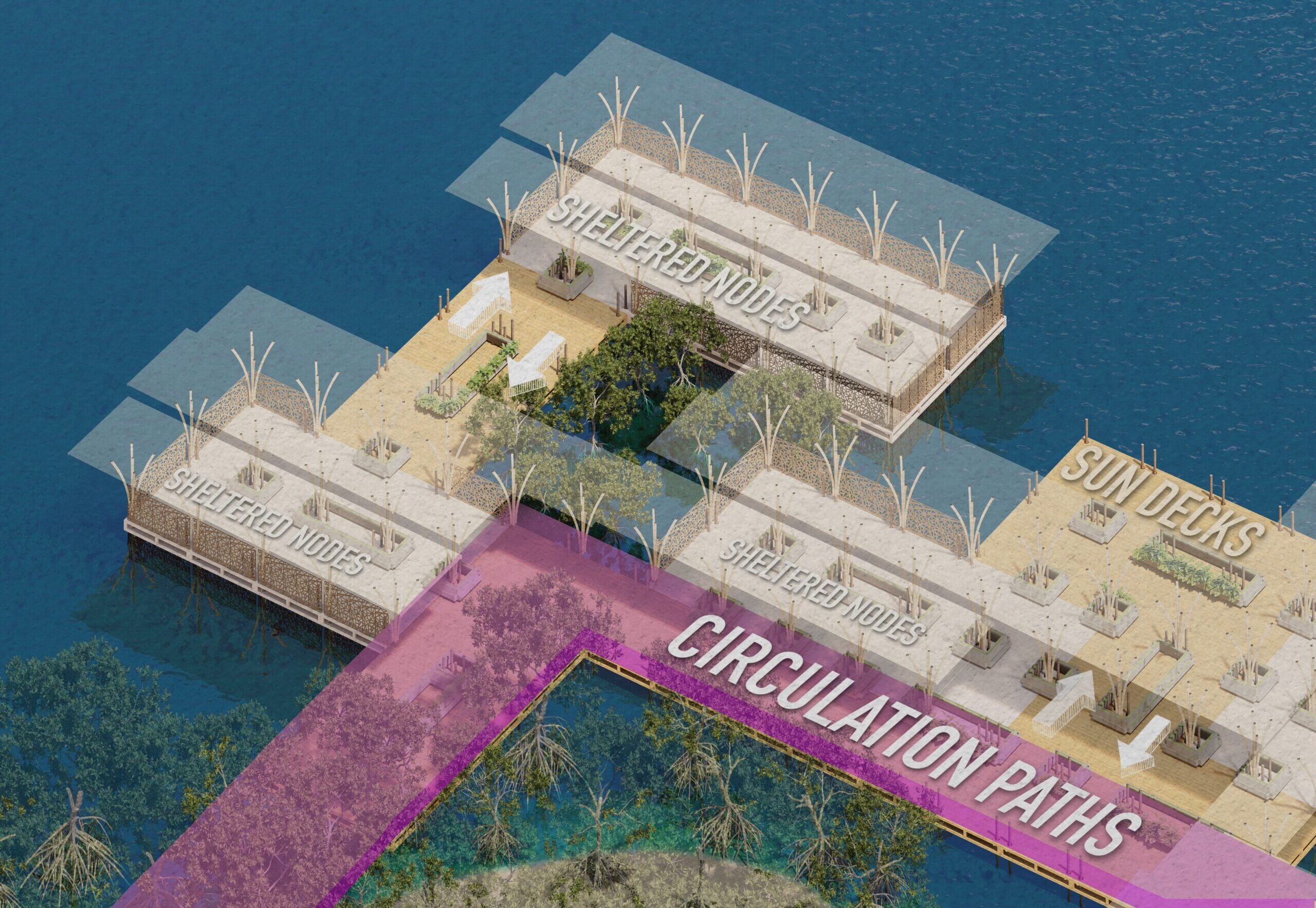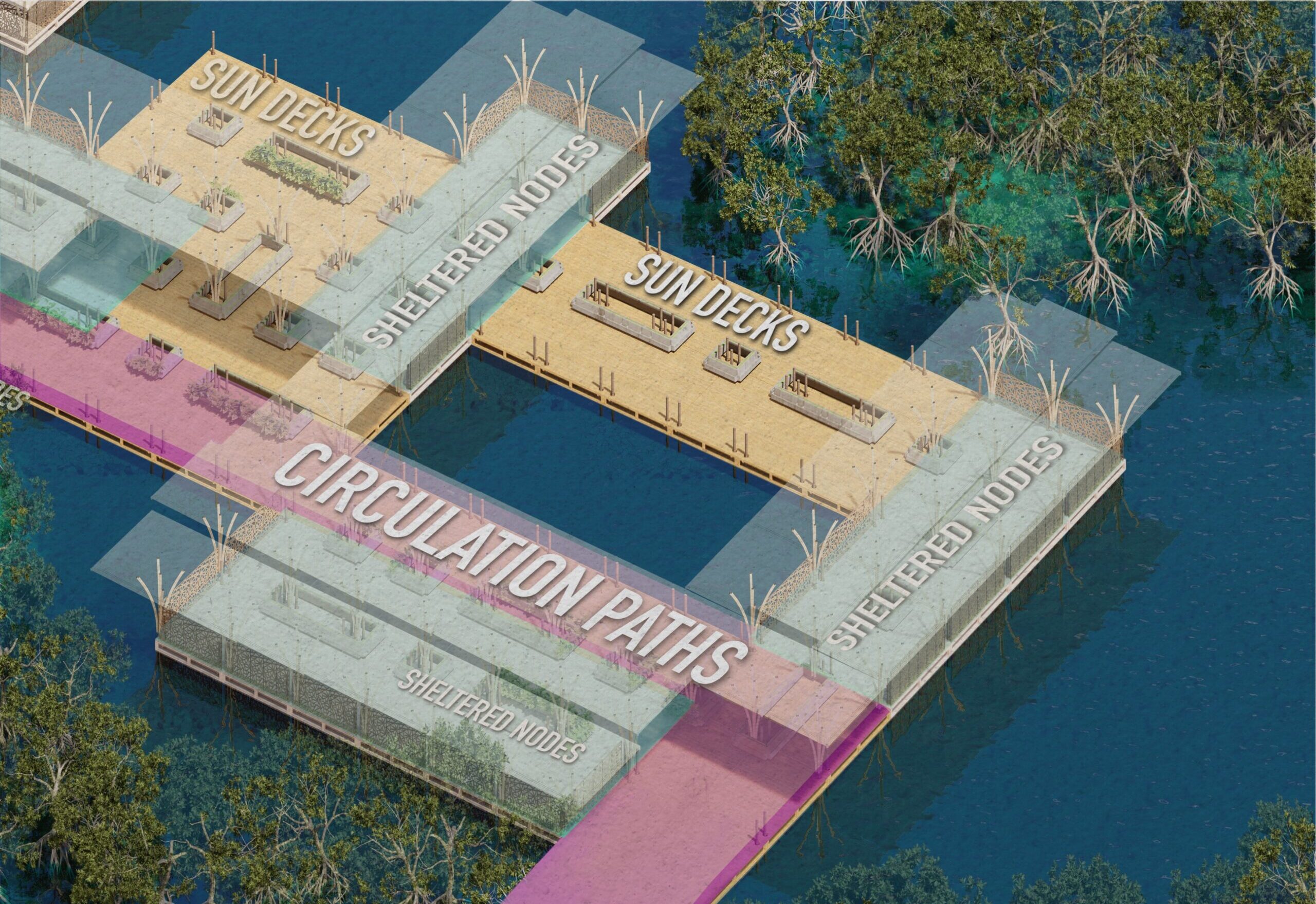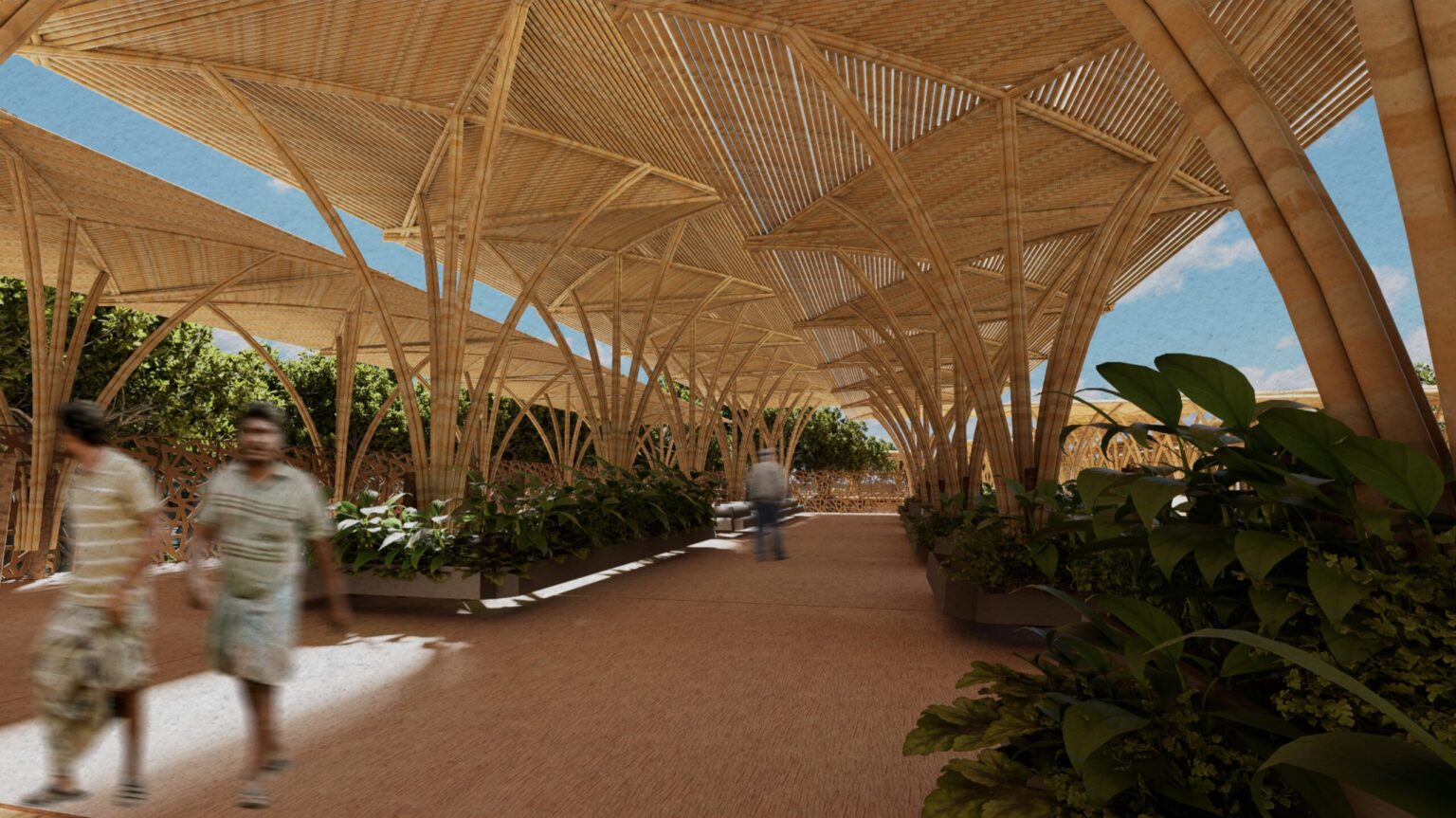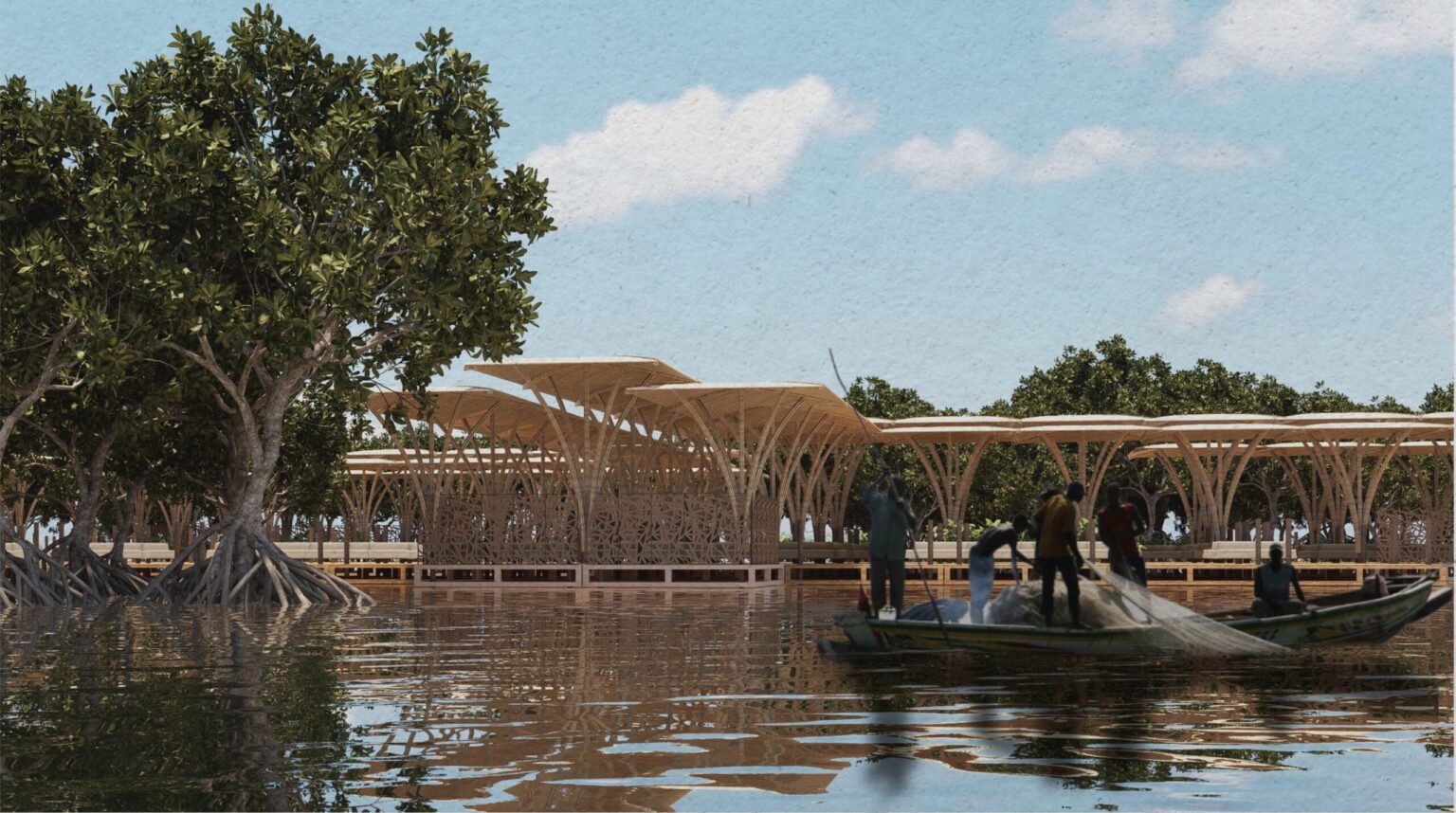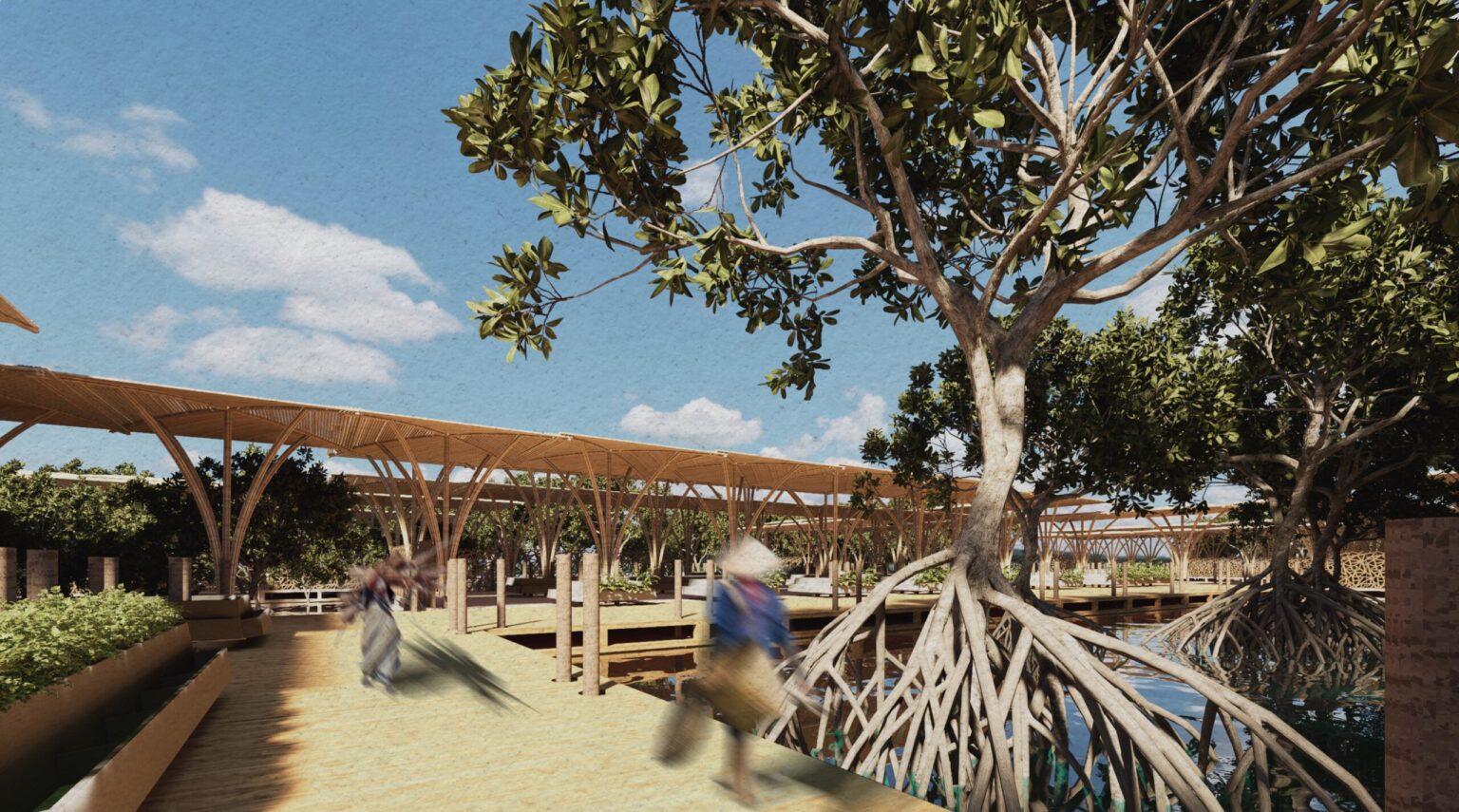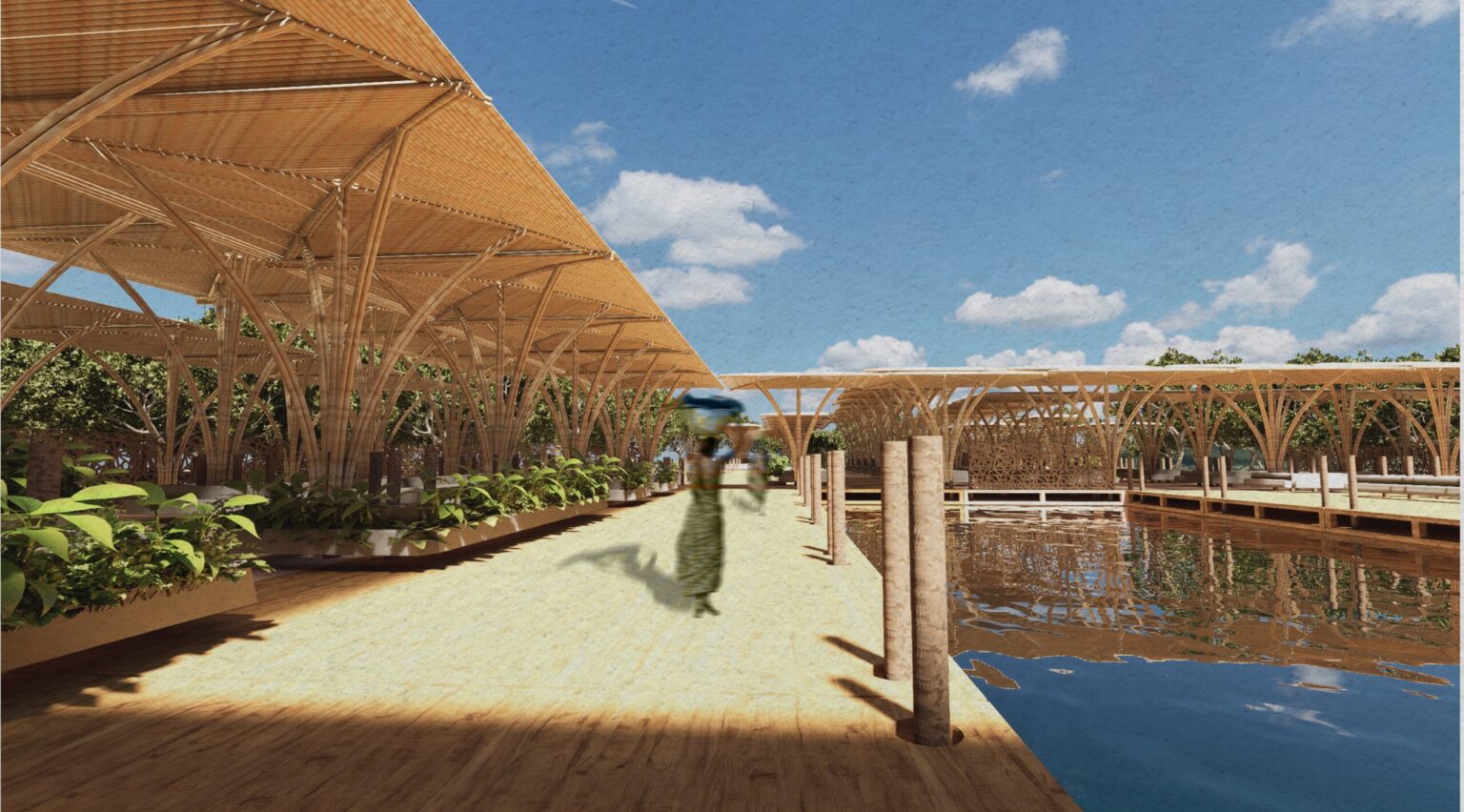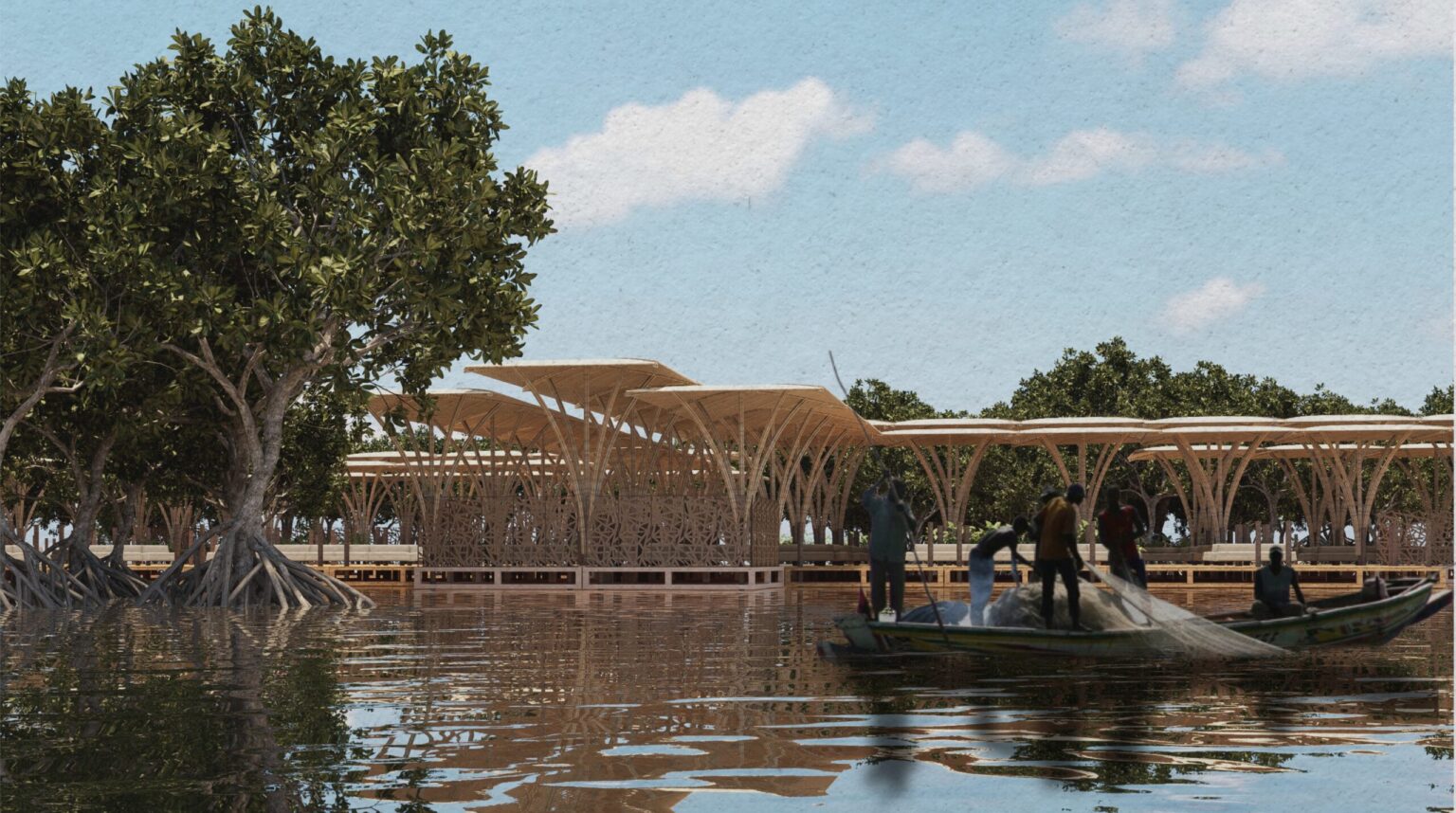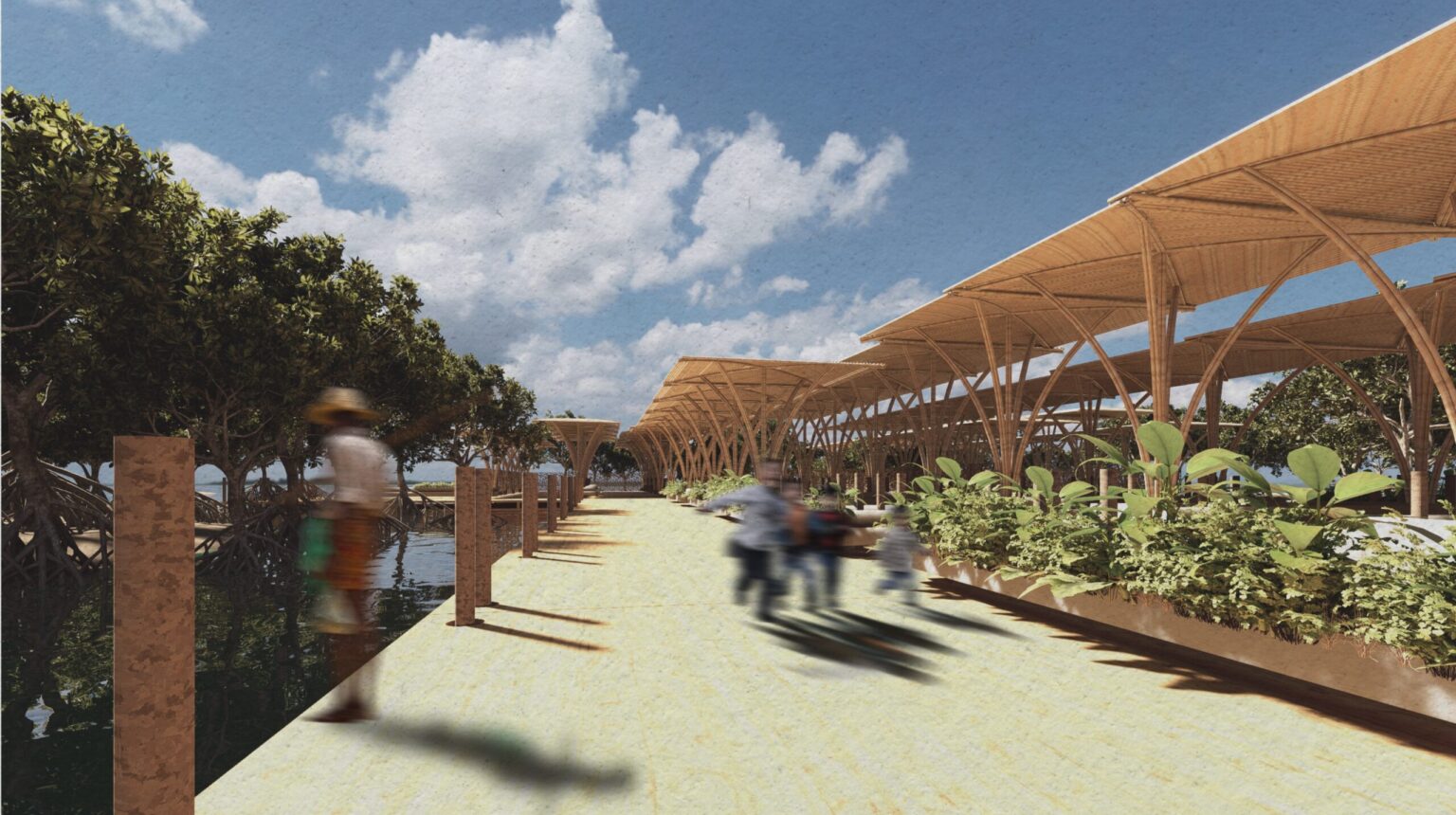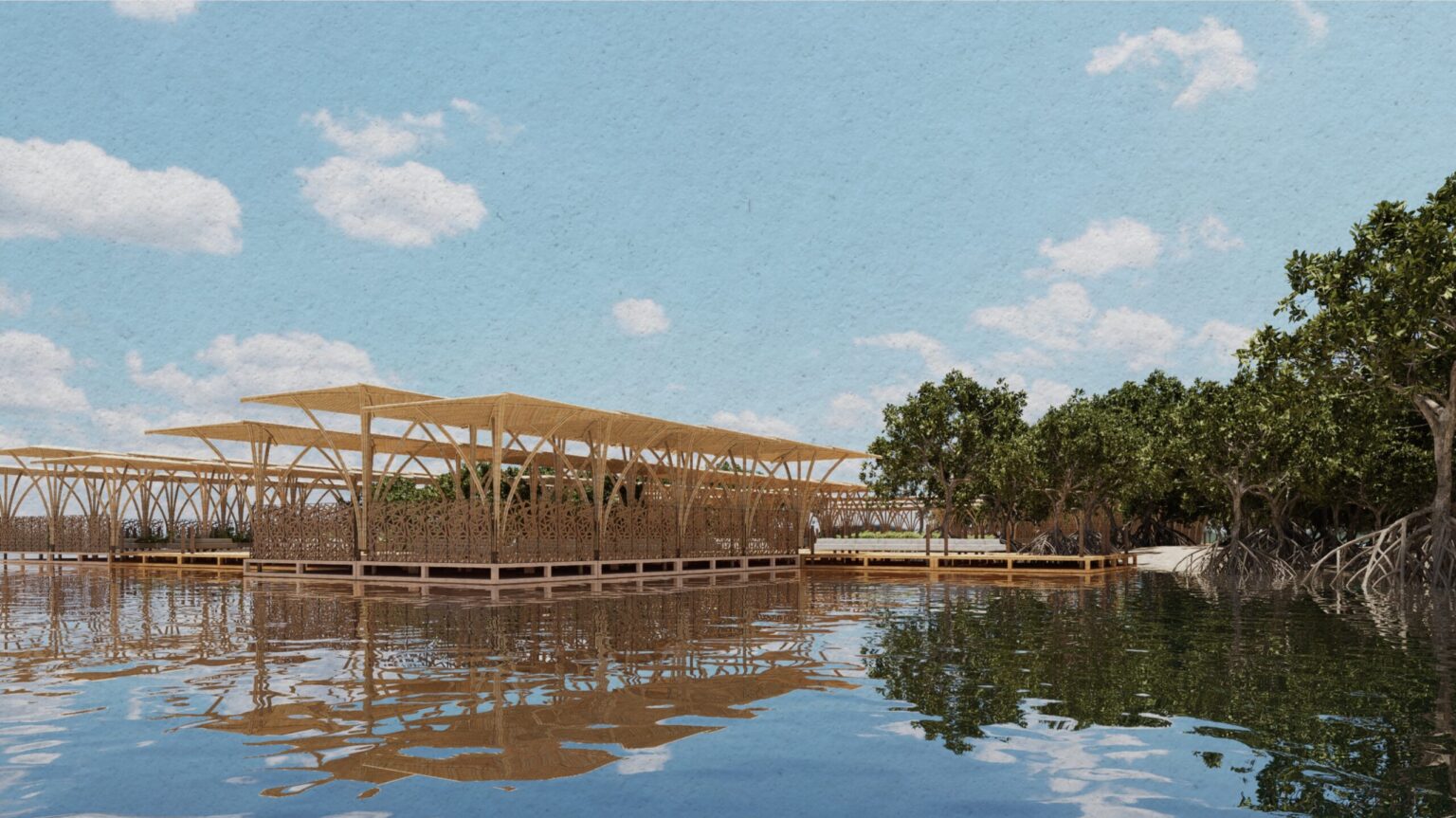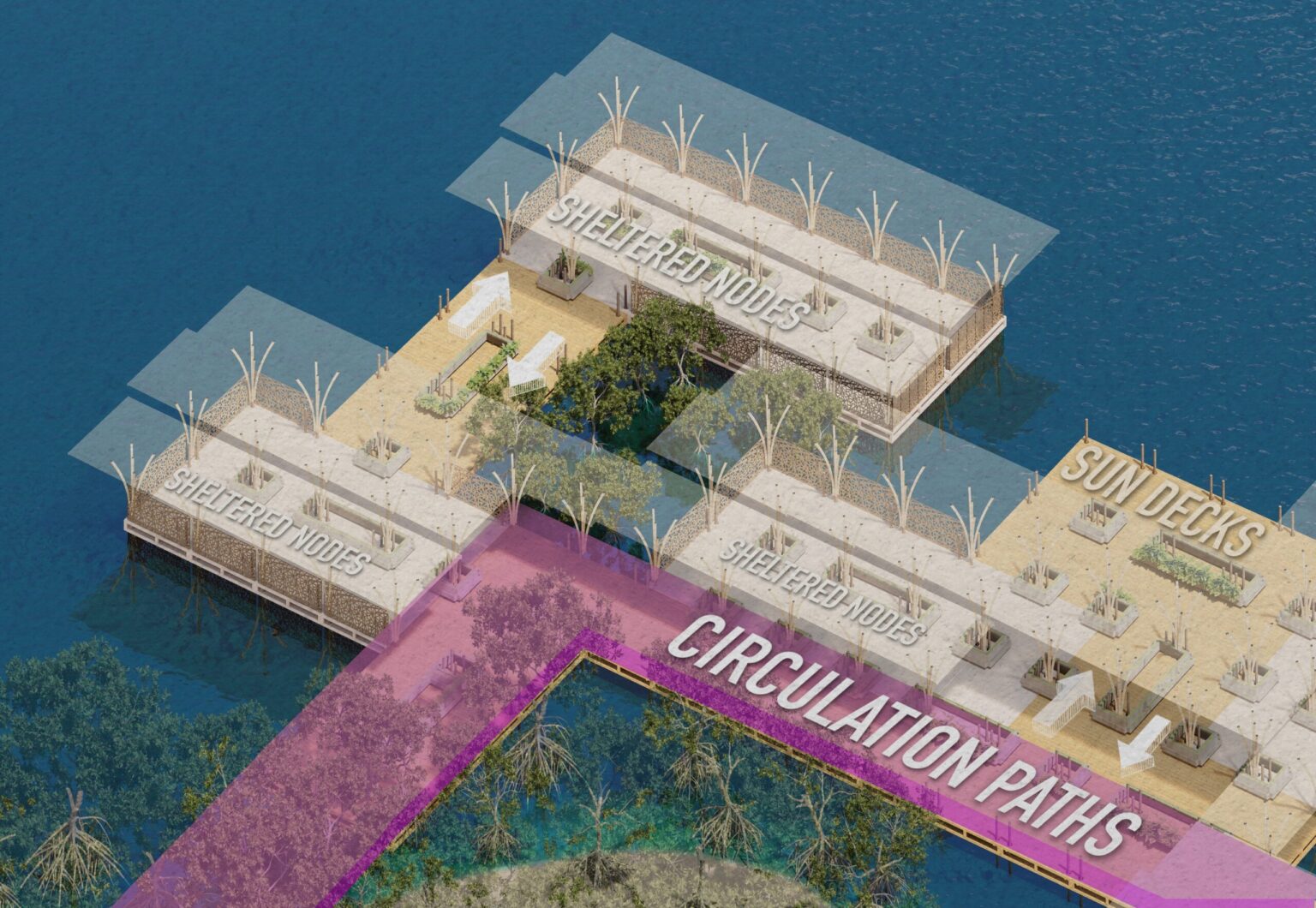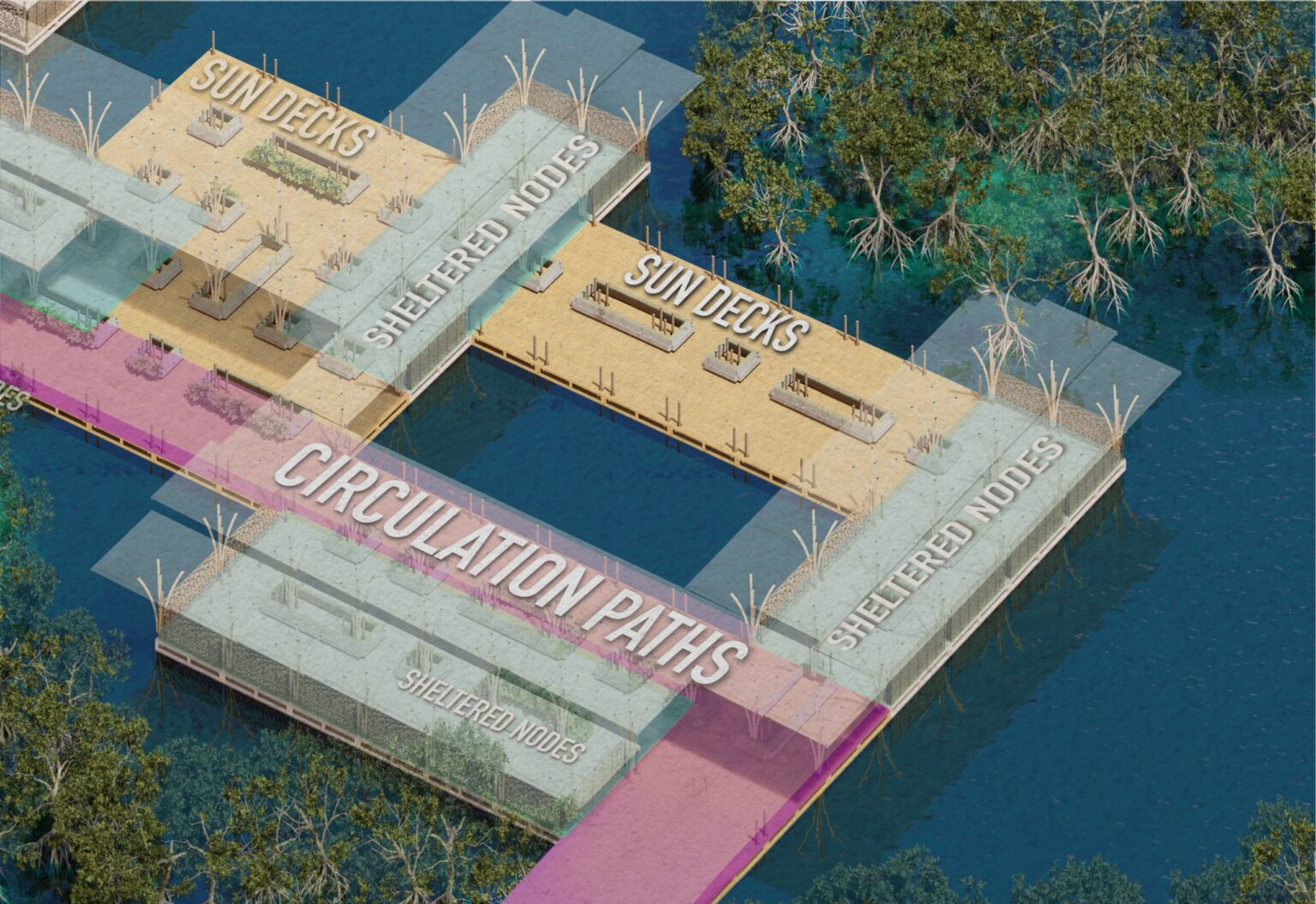Urban Mangrove
A floating architecture for a community in transformation.
Urban Mangrove: A Floating Community Space in Maracaibo
Project Description
URBAN MANGROVE is a conceptual architectural proposal located in Maracaibo, Venezuela. Developed as an academic and exploratory exercise, this project is not intended for immediate construction, but rather to provoke reflection on how design can respond to the environmental and social challenges faced by paraphytic communities living along the edges of Lake Maracaibo.
As the waters rise and green spaces disappear, URBAN MANGROVE imagines a new kind of public ground—one that floats, adapts, and supports collective life. It is a speculative gesture, shaped by care and curiosity, that invites conversation about resilience, community, and the evolving role of architecture in vulnerable territories.
Concept – Reinterpreting the Roots
At RE DFIND, we believe architecture begins with listening. In URBAN MANGROVE, we listened to the rhythm of water, the resilience of floating communities, and the silent echo of disappearing public spaces.
The project is inspired by the natural logic of mangroves—resilient systems that survive and protect. The structural grid reflects their roots, while overhead canopies evoke the filtering shade of their foliage. These forms serve not only as metaphors, but as functional references for a space that offers refuge, flexibility, and belonging.
This is a design that honors the past while imagining possible futures.
Spatial Experience & Circulation
Movement through URBAN MANGROVE is designed as a fluid and intuitive experience. Floating walkways create a sequence of covered and open-air platforms, allowing for both structured programming and spontaneous use. Each transition is carefully considered—not only in terms of access, but in how it frames light, space, and social interaction.
We worked with a human scale, ensuring that every proportion, texture, and threshold fosters comfort, dignity, and engagement. Here, circulation is not just functional—it’s emotional.
Program & Functionality
As a conceptual project, the program of URBAN MANGROVE is intentionally open and adaptable, proposing three primary elements:
Covered Gathering Spaces: for workshops, learning, dialogue, or celebration.
Open-Air Platforms: flexible areas for play, rest, market activity, or community rituals.
Circulation Paths: floating walkways that encourage flow, pause, and connection between spaces.
This modular system is imagined to evolve with time and use. Though speculative, it explores how architecture might serve as both infrastructure and invitation.
Materiality & Atmosphere
The material logic of URBAN MANGROVE is grounded in ecological awareness and poetic simplicity.
Each square meter of the floating platform is imagined to rest on recycled plastic gallons—a nod to local reuse practices and the potential of overlooked materials. These elements suggest a system that is light, repairable, and respectful of its environment. The canopies are conceived as soft layers, diffusing light and creating gentle microclimates.
The atmosphere is one of humility, honesty, and quiet resilience.
Design Philosophy
At RE DFIND, we see architecture not merely as construction, but as a form of cultural and emotional dialogue. We are interested in how space can listen, heal, and hold people—especially in contexts where traditional architecture no longer fits.
URBAN MANGROVE is a speculative project, but its intentions are real. It reflects our belief that design can ask meaningful questions:
What does public space look like when the ground disappears?
How can we build without colonizing?
What does it mean to design with empathy rather than ego?
This proposal does not aim to be definitive. Instead, it opens a door—to imagination, to conversation, and to new ways of living together.
Credits
Project: Urban Mangrove
Location: Maracaibo, Venezuela
Design: Arch. Cesar Garcia
Research and Development: Arch. Cesar Garcia
Year: 2022
Oject Type: Conceptual exploration
Additional Acknowledgments: This project is a speculative exercise inspired by themes of community resilience, ecological adaptation, and the architectural reinterpretation of mangrove ecosystems as social infrastructure. It seeks to open dialogue on the future of public space in vulnerable coastal territories.
